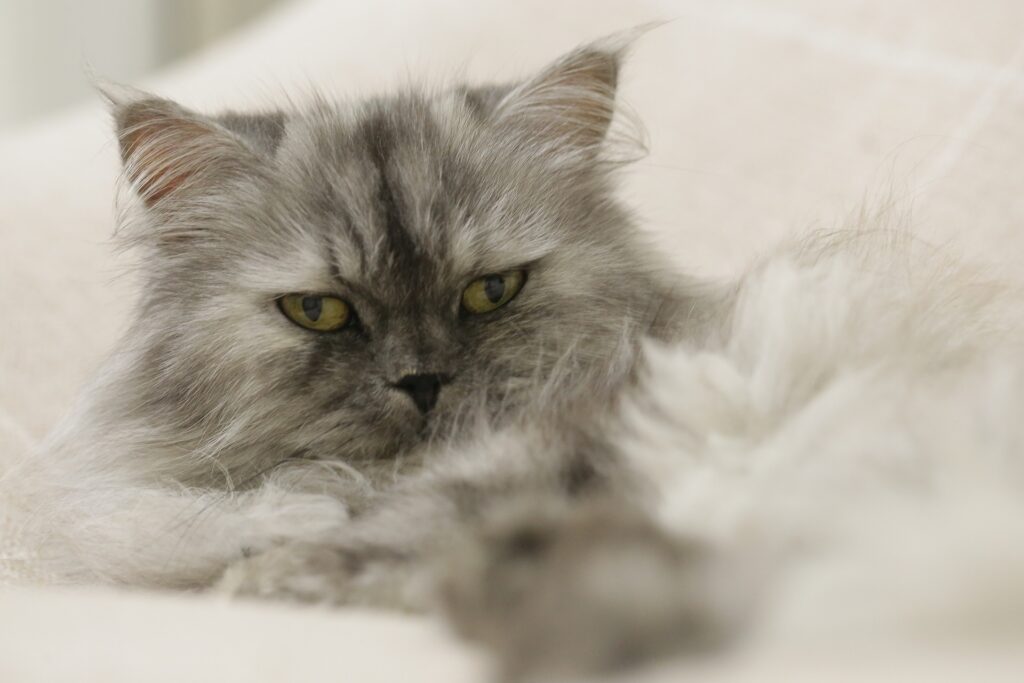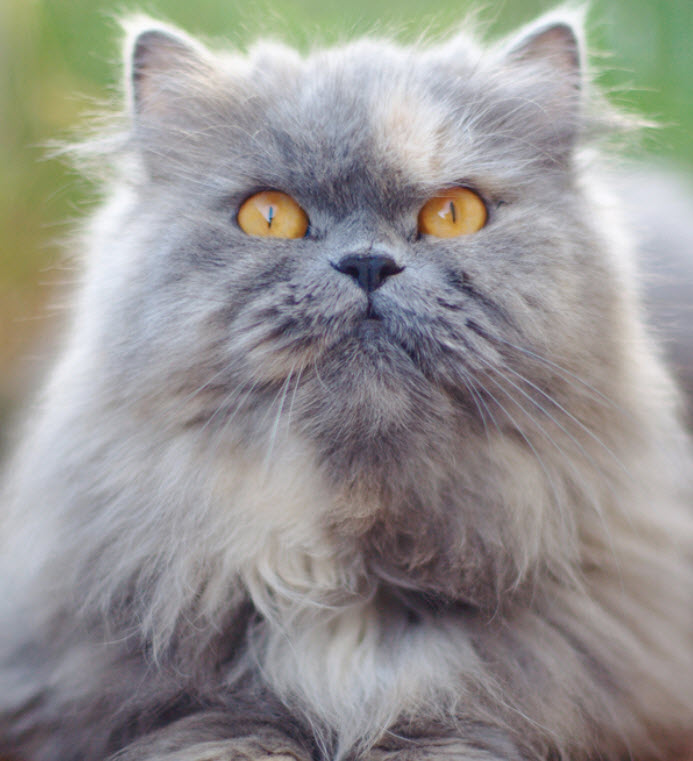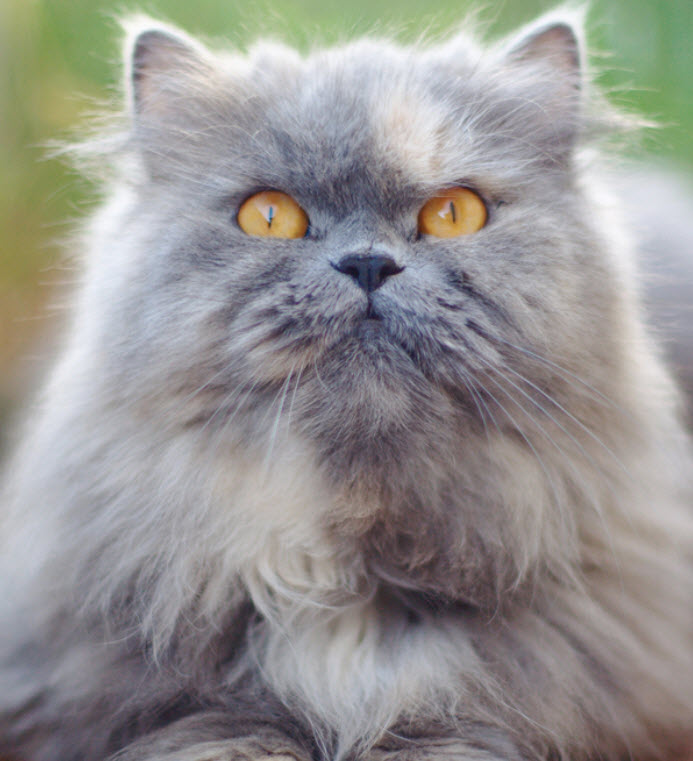Do you have a Persian cat with special needs? Taking care of a cat with specific requirements can be a challenge, but it’s also rewarding to see them thrive. In this article, we’ll delve into the topic of caring for a Persian cat with special needs and provide you with valuable information and tips. Whether your Persian cat has mobility issues, dietary restrictions, or any other special needs, we’re here to guide you on providing the best care possible. So, stay tuned to learn more about how you can ensure your beloved feline friend’s well-being and happiness.
Caring for a Persian Cat with Special Needs
Caring for a Persian cat with special needs requires extra attention and care. These adorable felines are known for their unique physical characteristics and specific health concerns. By understanding their special needs and implementing appropriate care measures, you can ensure a happy and healthy life for your Persian cat.

Understanding the Special Needs of Persian Cats
Persian cats have distinct physical features that require special care. Their flat faces, long and dense fur, and shortened muzzle can lead to various health issues. It is essential to be aware of these challenges and provide appropriate care to maintain their well-being.
Unique Physical Characteristics of Persian Cats
Persian cats are characterized by their flat faces, or brachycephalic structure. This feature can lead to breathing difficulties, dental issues, and eye problems. Their long and dense fur requires regular grooming to prevent matting and skin irritations.
Common Health Concerns in Persian Cats
Persian cats are prone to certain health conditions, such as polycystic kidney disease (PKD), heart disease, dental problems, and urinary tract issues. Regular veterinary check-ups and preventive care are crucial to manage and prevent these conditions.
Challenges Associated with Brachycephalic Breeds
Being a brachycephalic breed, Persian cats may experience difficulty breathing, especially in hot and humid environments. Their shortened muzzle and nasal passages can restrict airflow, leading to labored breathing and potential respiratory distress.
Importance of Regular Check-ups and Monitoring
Due to their unique physical characteristics and potential health concerns, Persian cats require regular veterinary check-ups and monitoring. These visits allow early detection and management of any underlying conditions, ensuring your cat’s overall health and well-being.
Providing Proper Nutrition for a Persian Cat with Special Needs
Proper nutrition plays a vital role in ensuring the health and vitality of a Persian cat. These cats have specific dietary requirements that must be met to maintain their well-being.
Specific Dietary Requirements for Persian Cats
Persian cats require a diet that supports their unique needs. Their flat faces can result in difficulty grasping and chewing food, so it’s essential to provide them with easily manageable kibble or wet food.
Choosing the Right Type of Food for a Persian Cat
When selecting food for your Persian cat, consider options that promote dental health, aid in hairball control, and support a healthy digestive system. Look for high-quality dry and wet food that is specifically formulated for Persian cats.
Managing Weight and Preventing Obesity
It’s crucial to monitor your Persian cat’s weight and prevent obesity. Obesity can worsen their breathing difficulties, contribute to joint problems, and impact overall health. Offer controlled portions and engage them in regular exercise to maintain a healthy weight.
Dealing with Food Allergies or Sensitivities
Some Persian cats may develop food allergies or sensitivities. If you notice any signs of allergic reactions, such as skin irritations, gastrointestinal disturbances, or excessive scratching, consult with your veterinarian to identify and eliminate the allergen from their diet.
Supplementing the Diet with Essential Nutrients
To ensure your Persian cat receives all the necessary nutrients, consider supplementing their diet with essential fatty acids, vitamins, and minerals. Consult with your veterinarian to determine the appropriate supplements and their recommended dosage.

Creating a Safe and Comfortable Environment for a Persian Cat with Special Needs
Providing a safe and comfortable environment is essential for the well-being and happiness of a Persian cat. Implementing specific measures can help accommodate their unique needs and ensure they feel secure and content in their surroundings.
Designing an Accessible Living Space
Persian cats may face challenges navigating their environment due to their flat faces and potential respiratory issues. Ensure their living space is free from obstacles and provides easy access to food, water, litter boxes, and resting areas.
Providing Adequate Litter Box Options
Persian cats appreciate clean and easily accessible litter boxes. Consider providing multiple litter boxes in different locations to cater to their needs. Choose litter that is easy to dig and does not cling to their long fur.
Ensuring Proper Temperature and Ventilation
Persian cats are sensitive to temperature extremes. Ensure their living space is well-ventilated and kept at a comfortable temperature. Avoid exposing them to direct sunlight or drafts, as these can exacerbate breathing difficulties.
Minimizing Noise and Disturbances
Persian cats thrive in a calm and peaceful environment. Minimize loud noises, such as vacuum cleaners or loud music, to prevent stress and anxiety. Create a quiet sanctuary where your cat can retreat to when they need some solitude.
Creating Vertical Spaces for Climbing and Perching
Persian cats enjoy climbing and perching on elevated surfaces. Provide cat trees, shelves, or window perches to cater to their natural instincts. These vertical spaces not only provide enrichment but also give them an elevated vantage point to observe their surroundings.
Choosing Suitable Toys and Enrichment Activities
Engaging your Persian cat in play and enrichment activities is important for their overall well-being. Offer a variety of toys that stimulate their mind and encourage physical activity. Puzzle toys and interactive toys can be especially effective in keeping them mentally and physically stimulated.
Grooming Techniques for a Persian Cat with Special Needs
Proper grooming is essential for maintaining the health and appearance of a Persian cat. Their long and dense fur requires regular attention to prevent matting, skin issues, and other complications.
Importance of Regular and Proper Grooming
Regular and thorough grooming is a must for Persian cats. This helps keep their fur clean, prevents matting, and reduces the risk of skin irritations and infections. Grooming sessions also provide an opportunity for bonding and ensure your cat feels comfortable and loved.
Managing Long and Dense Fur
Persian cats have long, silky fur that requires daily brushing. Use a wide-toothed comb or a slicker brush to gently remove tangles and prevent matting. Take care when brushing near sensitive areas, such as the face, ears, and tail.
Preventing Matting and Skin Irritations
Matting is a common issue in Persian cats due to their long fur. Regular brushing helps prevent matting, but if matting occurs, it must be carefully and gently removed to avoid causing discomfort or skin irritations.
Cleaning and Maintaining Facial Features
Persian cats are known for their prominent facial features, which need regular care and cleaning. Use a damp cloth or unscented baby wipe to gently clean the face, focusing on the eyes, nose, and folds around the mouth. Take care to dry the face thoroughly to prevent moisture-related issues.
Examining and Caring for the Eyes, Ears, and Nose
Persian cats are susceptible to eye and ear problems. Regularly check their eyes for signs of redness, discharge, or irritation. Clean their ears using a vet-recommended ear cleaner and cotton pad. Keep an eye on their nose for any signs of abnormalities or discharge.
Trimming Nails and Maintaining Paw Health
Regular nail trims are essential for Persian cats to prevent overgrowth and discomfort. Use appropriate cat nail clippers or a veterinarian-recommended nail grinder. Take care not to cut too close to the quick to avoid causing pain or bleeding.
Bathing and Drying Techniques
Persian cats require occasional baths to keep their fur clean and free from dirt and oils. Use a cat-specific shampoo and warm water for bathing. Be gentle and ensure all products are thoroughly rinsed off. After bathing, dry your cat using a towel or a low-heat blow dryer on the lowest setting.

Managing Medical Conditions in a Persian Cat
Persian cats are prone to certain medical conditions that require proper management and care. Regular monitoring, early detection, and prompt treatment are essential for maintaining their health and well-being.
Recognizing and Treating Common Medical Conditions
Familiarize yourself with the common medical conditions that Persian cats may develop. These include polycystic kidney disease (PKD), heart disease, dental issues, urinary tract problems, allergies, and respiratory issues. Consult with your veterinarian for early diagnosis and proper treatment.
Dealing with Breathing Issues
Persian cats’ brachycephalic structure can lead to breathing difficulties. If you notice your cat experiencing shortness of breath, wheezing, or respiratory distress, consult with your veterinarian. They may recommend lifestyle changes, medications, or surgical interventions to improve breathing.
Managing Eye Problems and Tear Staining
Persian cats are prone to eye problems, such as conjunctivitis, tear duct blockage, and excessive tearing. Regular eye cleaning with a vet-recommended eye cleaner can help prevent infections and manage tear staining. In some cases, surgical interventions may be necessary to correct tear duct abnormalities.
Addressing Dental Health Concerns
Dental issues, such as gum disease and tooth decay, are common in Persian cats. Provide regular dental care, including brushing their teeth with cat-specific toothpaste, offering dental treats or chews, and scheduling professional dental cleanings as recommended by your veterinarian.
Preventing Urinary Tract Problems
Persian cats are susceptible to urinary tract problems, including urinary blockages and bladder infections. Ensure they have access to fresh water at all times and encourage proper hydration. Consult with your veterinarian regarding appropriate diets and preventive measures to minimize the risk of urinary tract issues.
Supporting the Immune System
A strong immune system is crucial for a Persian cat’s overall health and well-being. Provide a balanced diet, ensure regular exercise, and minimize stress to support their immune function. Consult with your veterinarian regarding supplements or medications that may enhance their immune system.
Understanding the Risk of Polycystic Kidney Disease
Polycystic kidney disease (PKD) is a genetic disorder commonly found in Persian cats. Regular monitoring through ultrasounds and genetic testing is essential to detect early signs of the disease. Consult with your veterinarian regarding appropriate management and treatment options if your cat is diagnosed with PKD.
Dealing with Heart Conditions
Heart conditions, such as hypertrophic cardiomyopathy (HCM), can occur in Persian cats. Regular veterinary check-ups, including cardiac screenings, are crucial to detect and manage any heart abnormalities. Medications, lifestyle changes, and potential surgical interventions may be recommended by your veterinarian.
Coping with Allergies
Both allergies and allergic reactions can occur in Persian cats. They may be allergic to certain foods, environmental allergens, or even certain grooming products. Avoid allergens that trigger reactions and consult with your veterinarian for appropriate allergy management strategies.
Establishing a Regular Veterinary Care Routine
Establishing a regular veterinary care routine is essential for the overall health and well-being of your Persian cat. Regular check-ups, vaccinations, and preventive care measures will help keep your cat healthy and detect any potential concerns early.
Finding a Veterinarian familiar with Persian Cats
Choose a veterinarian who has experience and knowledge about the unique needs and health issues of Persian cats. They will be better equipped to provide appropriate care and support for your cat.
Routine Vaccinations and Preventive Care
Ensure your Persian cat receives all necessary vaccinations as recommended by your veterinarian. Vaccinations protect against common feline diseases and help prevent the spread of infectious illnesses.
Scheduling Regular Health Check-ups
Regular health check-ups are essential for monitoring your Persian cat’s overall health and detecting any potential issues. These check-ups may include physical examinations, blood work, urinalysis, and other diagnostic tests as recommended by your veterinarian.
Routine Bloodwork and Health Monitoring
Routine bloodwork helps assess your cat’s internal health and can detect underlying conditions. Your veterinarian may recommend routine blood tests to monitor organ function, check for any abnormalities, and ensure your cat’s well-being.
Parasite Control and Prevention
Parasite control is crucial for the health of your Persian cat. Regularly administer flea and tick preventives recommended by your veterinarian. Additionally, follow a deworming schedule to prevent internal parasite infestations.

Addressing Behavioral Challenges in a Persian Cat with Special Needs
Persian cats, like any other breed, may experience behavioral challenges from time to time. Understanding and addressing these challenges can help create a harmonious and stress-free environment for both you and your cat.
Understanding and Managing Separation Anxiety
Separation anxiety can occur in Persian cats who form a strong bond with their owners. Provide environmental enrichment, such as interactive toys and puzzle feeders, to keep them mentally stimulated when you’re away. Gradually desensitize your cat to your departure and arrival routines to reduce anxiety.
Dealing with Excessive Vocalization
Persian cats can be vocal, especially when they want attention or are feeling stressed. Address the root cause of excessive vocalization, whether it’s loneliness, boredom, or discomfort. Engage your cat in interactive play and provide enough mental and physical stimulation to keep them content.
Managing Aggression or Fear-Based Behaviors
Some Persian cats may exhibit aggression or fear-based behaviors due to past experiences or temperament. Consult with a professional animal behaviorist to address these behaviors and implement behavior modification techniques that promote positive interactions.
Providing Mental Stimulation and Environmental Enrichment
Persian cats are intelligent and curious by nature. Provide mental stimulation through interactive toys, treat puzzles, and environmental enrichment. This helps prevent boredom and promotes a healthier, happier cat.
Teaching and Reinforcing Desirable Behaviors
Positive reinforcement techniques can be used to teach and reinforce desirable behaviors. Reward your Persian cat with treats, praise, or playtime when they display desired behaviors. Consistency and patience are key to successful training.
Addressing Litter Box Problems
Litter box problems can occur in Persian cats, especially if they have certain medical conditions or are experiencing stress. Ensure the litter box is in a quiet and accessible location, and keep it clean. If litter box problems persist, consult with your veterinarian to rule out any underlying medical issues.
Handling Destructive Behaviors
Destructive behaviors, such as scratching furniture or chewing on cords, can be redirected with appropriate alternatives. Provide scratching posts, cat trees, and interactive toys to redirect their natural instincts and prevent destructive behaviors.
Helping a Persian Cat with Mobility Issues
Mobility issues can affect Persian cats, especially as they age. By recognizing the signs and providing appropriate assistance, you can help your cat maintain mobility and improve their quality of life.
Recognizing Signs of Mobility Issues
Keep an eye out for signs of mobility issues in your Persian cat, such as stiffness, difficulty climbing stairs or jumping, and reluctance to move. These signs may indicate joint problems or age-related conditions like arthritis.
Assisting with Mobility and Accessibility
Make necessary modifications to your home to improve accessibility for a Persian cat with mobility issues. Provide ramps or steps to help them reach elevated surfaces, and ensure their living space allows for easy movement.
Providing Supportive Devices or Aids
Supportive devices such as ramps, stairs, or slings can assist your Persian cat in navigating their environment. Consult with your veterinarian or a professional pet mobility specialist to determine the appropriate aids for your cat’s specific needs.
Modifying the Home Environment for Mobility
Create a safe and comfortable home environment by removing obstacles and providing low-entry litter boxes and feeding stations. Consider placing rugs or mats on slippery surfaces to help your cat maintain balance and stability.
Physical Therapy Exercises and Rehabilitation
Consult with your veterinarian or a veterinary physical therapist for guidance on physical therapy exercises and rehabilitation techniques. These exercises can help improve mobility, strengthen muscles, and alleviate discomfort in cats with mobility issues.

Socialization and Enrichment for a Persian Cat with Special Needs
Socialization and enrichment play a crucial role in the well-being and happiness of Persian cats. Engaging them in positive interactions and providing mental stimulation can help prevent behavior issues and ensure a fulfilling life.
Importance of Early Socialization
Early socialization is vital to ensure your Persian cat grows up to be comfortable and confident in various environments. Introduce them to different people, objects, and experiences from a young age to foster positive socialization.
Introducing a Persian Cat to New Environments
When introducing your Persian cat to new environments, do so gradually and with patience. Provide a secure and comfortable space for them to retreat to if they feel overwhelmed. Allow them to explore at their own pace and reward them with praise or treats for calm and confident behavior.
Encouraging Positive Interactions with Humans and Other Animals
Expose your Persian cat to positive interactions with humans and other animals. Encourage gentle handling, playtime, and supervised introductions to other cats or well-behaved dogs to foster their social skills.
Introducing Enrichment Activities and Toys
Enrichment activities and toys provide mental stimulation for Persian cats. Interactive puzzle toys, treat-dispensing toys, and scratching posts can help keep them mentally engaged and prevent boredom.
Promoting Mental Stimulation and Play
Engage your Persian cat in regular play sessions to keep them mentally stimulated and physically active. Use interactive toys, feather wands, or laser pointers to encourage natural hunting and play behaviors.
Managing Stress and Anxiety in a Persian Cat
Persian cats can be prone to stress and anxiety due to various factors. Recognizing the sources of stress and implementing appropriate strategies can help create a calm and comfortable environment for your cat.
Identifying Sources of Stress and Anxiety
Identify potential sources of stress and anxiety in your Persian cat’s environment. Common triggers include changes in routine, loud noises, unfamiliar visitors, or the presence of other animals. Understanding these triggers can help you better manage stress.
Creating a Calming and Safe Environment
Create a calming and safe environment for your Persian cat. Provide a designated sanctuary where they can retreat and feel secure. Use pheromone diffusers or calming sprays to promote relaxation. Ensure their living space is free from stress-inducing factors.
Using Pheromone Products for Anxiety Relief
Pheromone products, such as Feliway, can help alleviate anxiety in Persian cats. These products mimic natural feline facial pheromones, creating a sense of familiarity and comfort. Use diffusers, sprays, or collars as recommended by your veterinarian.
Implementing Behavior Modification Techniques
Consult with a professional animal behaviorist to implement behavior modification techniques for anxiety management. These techniques may include desensitization, counterconditioning, and positive reinforcement training.
Providing a Consistent Routine and Structure
Persian cats thrive on routine and structure. Maintain a consistent daily routine for feeding, playtime, and sleep. Minimize sudden changes or disruptions in their environment to reduce stress and anxiety.
Seeking Professional Help for Severe Anxiety
If your Persian cat’s anxiety is severe or significantly impacting their quality of life, consult with a veterinarian or certified animal behaviorist. They can provide additional guidance and potential medication options to help manage severe anxiety.
Training Techniques for a Persian Cat with Special Needs
Training is not only reserved for dogs; Persian cats can also benefit from basic training. The right training techniques can help foster a stronger bond with your cat and enhance their overall well-being.
Understanding the Importance of Training
Training provides mental stimulation, builds trust, and strengthens the bond between you and your Persian cat. It also promotes desirable behaviors and helps prevent behavior problems.
Teaching Basic Commands and Behaviors
Start with teaching basic commands, such as sit, stay, or come. Use positive reinforcement techniques, such as treats or praise, to reward desired behaviors. Keep training sessions short and enjoyable, focusing on positive and consistent reinforcement.
Using Positive Reinforcement Methods
Positive reinforcement methods are the most effective and humane way to train a Persian cat. Reward desired behaviors with treats, praise, or playtime to encourage repetition. Avoid punishment or harsh training techniques, as these can cause fear or aggression.
Dealing with Resistance or Stubbornness
Persian cats, like any other breed, can be independent and occasionally stubborn. Be patient and persistent during training sessions. Modify training techniques to suit your cat’s individual personality and preferences.
Fostering Bonding and Communication through Training
Training sessions provide an opportunity for bonding and communication between you and your Persian cat. Use training as a positive interaction and as a means to strengthen your relationship. Make training sessions fun and engaging for both of you.
Assisting a Persian Cat with Hearing or Vision Impairments
Persian cats can experience hearing or vision impairments, which require special considerations and care. Understanding their limitations and implementing appropriate techniques can help them adapt and thrive in their environment.
Recognizing Signs of Hearing or Vision Impairments
Pay attention to signs that may indicate hearing or vision impairments in your Persian cat. These signs may include sensitivity to loud noises, bumping into objects, or not responding to auditory cues. Consult with your veterinarian for a proper diagnosis and guidance.
Creating an Adapted Environment for Better Navigation
Make your Persian cat’s environment more accessible by removing potential obstacles and ensuring a safe layout. Avoid rearranging furniture or introducing major changes to their living space, as this can be disorienting for a visually impaired cat.
Using Tactile and Sensory Cues for Communication
Utilize tactile and sensory cues to communicate with a Persian cat with hearing or vision impairments. Use vibrations or gentle touches to get their attention and guide them when needed. Establish a consistent system of signals or cues for communication.
Training Techniques for Impaired Cats
Adapt training techniques for Persian cats with impaired hearing or vision. Use hand signals or touch cues as substitutes for verbal commands. Be patient and consistent during training sessions, allowing your cat time to understand and respond to the cues.
Special Considerations for Outdoor Exploration
If your Persian cat has hearing or vision impairments, outdoor exploration may pose additional risks. Consider providing a secure outdoor enclosure or supervised outdoor time to ensure their safety. Use a harness and leash for added control and to prevent them from getting lost.
Handling Incontinence in a Persian Cat
Incontinence can occur in Persian cats, especially as they age or due to certain medical conditions. Proper management and care can help minimize the impact and discomfort associated with incontinence.
Identifying Signs of Incontinence
Signs of incontinence in Persian cats may include frequent accidents outside the litter box, urinating in unusual places, or an inability to control bladder functions. Consult with your veterinarian to determine the underlying cause and appropriate management strategies.
Consulting with a Veterinarian for Diagnosis and Treatment
Incontinence can be a symptom of various medical conditions, such as urinary tract infections, bladder stones, or age-related changes. Consult with your veterinarian for a proper diagnosis and targeted treatment options.
Providing Appropriate Litter Box Options
Ensure your Persian cat has easily accessible and spacious litter boxes. Consider using low-entry or larger litter boxes to accommodate their needs. Place litter boxes in easily accessible locations to minimize accidents.
Managing Accidents and Maintaining Hygiene
If accidents occur, promptly clean the affected areas with an odor-neutralizing cleaner to prevent recurring accidents. Maintain good hygiene by regularly cleaning and refreshing the litter boxes to encourage your cat to use them consistently.
Using Protective Measures
Consider using protective measures, such as waterproof bedding or diapers specifically designed for cats, to manage incontinence. These options can help prevent uncomfortable situations for your Persian cat.
Consulting with a Veterinary Behaviorist or Trainer
In some cases, incontinence may be associated with behavioral issues. Consult with a veterinary behaviorist or trainer to address any underlying behavioral issues contributing to incontinence. They can provide guidance on behavior modification techniques and appropriate training strategies.
Providing End-of-Life Care for a Persian Cat with Special Needs
As Persian cats age or face certain medical conditions, their care requirements may change. Providing compassionate end-of-life care is essential to ensure their comfort and quality of life during their final stages.
Recognizing the Signs of Decline
Know the signs of decline in your Persian cat, such as decreased appetite, weight loss, lethargy, and difficulty breathing or walking. Consult with your veterinarian to determine the best course of action and to discuss end-of-life care options.
Palliative Care to Ensure Comfort
Palliative care focuses on providing comfort and managing symptoms during the final stages of a Persian cat’s life. This may involve pain management, administration of appropriate medications, and ensuring a peaceful and stress-free environment.
Making Difficult Decisions for Euthanasia
Euthanasia may be a humane choice to prevent unnecessary suffering when a Persian cat’s quality of life has significantly declined. Consult with your veterinarian to understand the options and make the best decision for your cat’s well-being.
Coping with Grief and Loss
Losing a beloved Persian cat is a heartbreaking experience. Allow yourself time to grieve and seek support from friends, family, or support groups who understand and share your love for cats. Remember the special memories you shared and the bond you had with your cat.
Conclusion
Caring for a Persian cat with special needs requires dedication, knowledge, and understanding. By providing proper nutrition, creating a safe environment, addressing medical conditions, and implementing appropriate training and care techniques, you can ensure a fulfilling and happy life for your precious Persian cat. Embrace the uniqueness of these delightful felines and celebrate the love and companionship they bring into your life.
Frequently Asked Questions
-
How often should I groom my Persian cat?
Grooming sessions for Persian cats should be done at least once daily to prevent matting and ensure their fur remains clean and healthy.
-
Are Persian cats prone to dental problems?
Yes, Persian cats are susceptible to dental issues such as gum disease and tooth decay. Regular dental care, including brushing and professional cleanings, is important to maintain their oral health.
-
Can I train my Persian cat to walk on a leash?
Yes, with patience and positive reinforcement, you can train your Persian cat to walk on a leash. Start with introducing them to the harness and leash indoors, gradually progressing to supervised outdoor walks.
-
How do I manage tear staining in my Persian cat?
Tear staining is a common issue in Persian cats. Regular cleaning of the face with a damp cloth or unscented baby wipe can help remove tear stains. If tear staining persists, consult with your veterinarian to rule out any underlying eye or tear duct issues.
-
How can I help my Persian cat with mobility issues?
Assist your Persian cat with mobility issues by providing ramps or steps to aid in climbing, ensuring their living space is free from obstacles, and consulting with your veterinarian for appropriate aids or therapies.
-
What can I do to minimize stress in my Persian cat?
Minimize stress in your Persian cat by providing a calm and safe environment, using pheromone products for anxiety relief, and maintaining a consistent routine and structure.
-
How often should I take my Persian cat to the veterinarian?
Persian cats should see their veterinarian at least once a year for routine check-ups, vaccinations, and preventive care. Senior cats or those with specific health concerns may require more frequent visits.
-
What signs should I look for to identify hearing or vision impairments in my Persian cat?
Signs of hearing or vision impairments in Persian cats may include not responding to auditory cues, bumping into objects, or displaying sensitivity to loud noises. Consult with your veterinarian for a proper diagnosis.
-
What can I do to manage incontinence in my Persian cat?
Consult with your veterinarian to determine the underlying cause of incontinence and identify appropriate management strategies. This may include providing easily accessible litter boxes, using protective measures, and maintaining good hygiene.
-
How do I provide compassionate end-of-life care for my Persian cat?
Compassionate end-of-life care involves ensuring your Persian cat’s comfort, managing symptoms, and making decisions based on their quality of life. Consult with your veterinarian to discuss appropriate options and make the best decision for your cat’s well-being.
NOTE: The information provided in this article is meant to be informative and does not substitute professional veterinary advice. If you have any concerns or questions about the care of your Persian cat, please consult with a qualified veterinarian.
